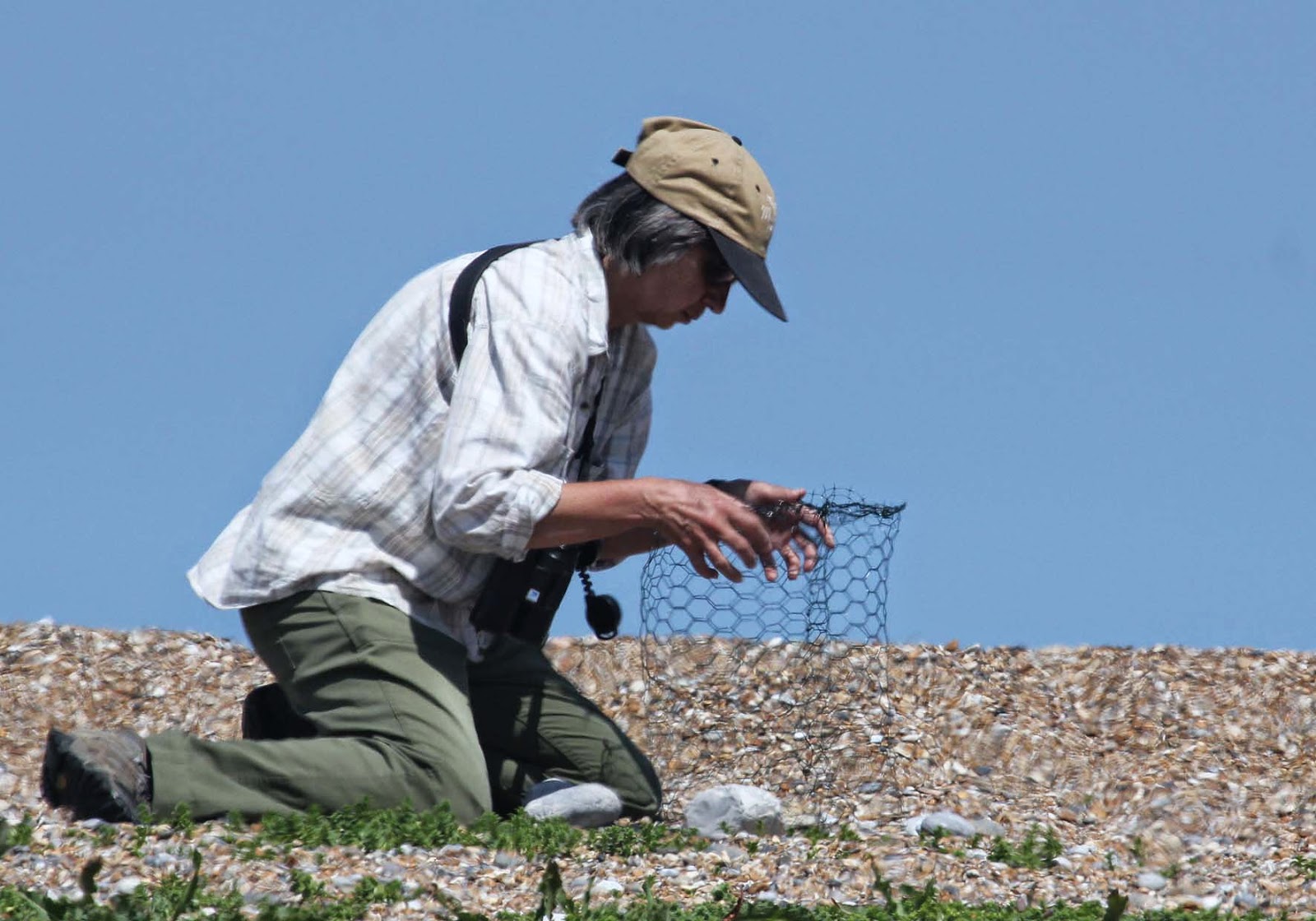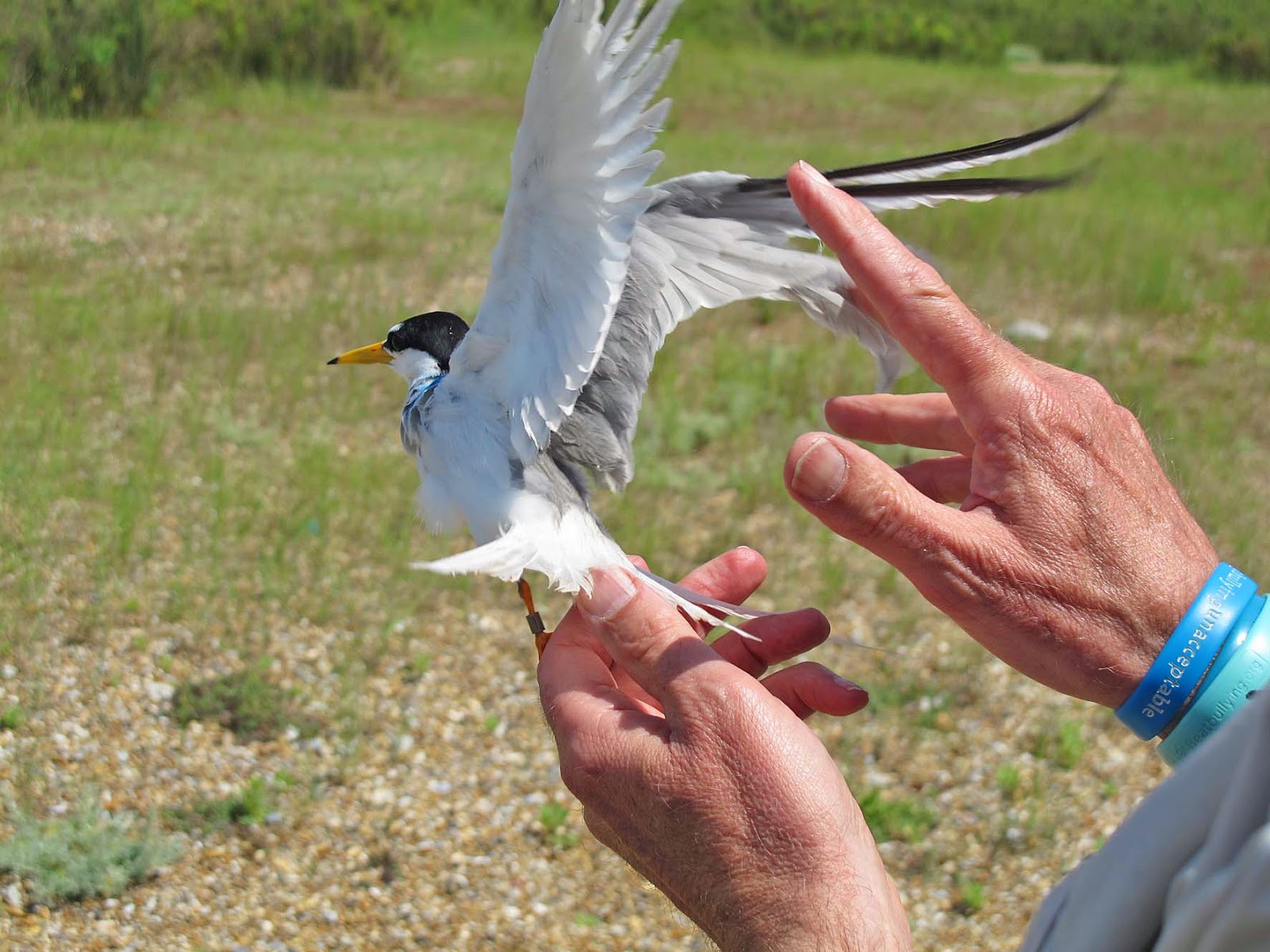The same Common Tern nest, at night:

Sandwich Terns are perhaps not the most hygienic of birds. They do not leave the nest to defaecate, resulting in a white 'sunburst' effect around the nesting area.
This image also shows just how closely Sandwich Terns nest together. These ones have been brave enough to nest around a Black-headed Gull.
Visitors to the Point are more than likely to see Oystercatcher chicks at this time of year. The chicks are nidifugous, meaning that they leave the nest soon after hatching and well before they are capable of flight. They can be seen being taught to feed by their parents. Please do not go too close to them or linger for too long.
The six Pied Wagtail chicks in the yellow plastic box left the nest yesterday.
This photograph was taken six days earlier.
Orchids are somewhat of a rarity on Blakeney Point. This June, we were delighted to find two in the main dunes.
Common Spotted Orchid
Southern Marsh Orchid
This week, the first Grayling butterflies of the year were seen on the wing. There have also been a sprinkling of smart Red Admirals.
Today's low tide seal count recorded an impressive 865 Grey Seals along with 26 Commons, on the West Sands.
Yesterday we stumbled upon a year-old Common Seal looking sorry for itself about a mile west of Cley Beach. It appeared to be struggling to breathe, possibly suffering from lungworm. We took it to the car park where the RSPCA came to collect it. They will treat the seal with antibiotics.
Ajay Tegala - Coastal Ranger
Photography: Ajay, Paul, Sarah (National Trust), Ben Collen (University College London)



.JPG)




.JPG)
































.JPG)



.JPG)
.JPG)

.JPG)


+guess+the+legs.JPG)
.JPG)

.JPG)